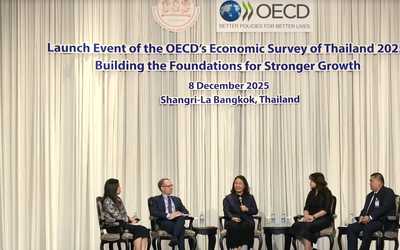Weather Fluctuations and Economic Growth at Subnational Level: Evidence from Thailand
Abstract
This paper examines weather fluctuations’ effects on subnational economic growth in Thailand (1982-2022). The identification strategy employs fixed-effects panel regressions on plausibly exogenous year-to-year weather variations within provinces, isolating local temperature’s causal effects on economic outcomes. Results reveal a statistically significant inverted-U relationship between temperature and per capita GPP growth. These adverse effects operate as persistent growth impacts, which appear more prominent in lower-income provinces, though formal statistical differences in response functions across income levels were not observed. Agriculture is highly vulnerable, while industrial and service sectors show no significant direct temperature impacts in this analysis. Integrating these estimates with RCP4.5 and RCP8.5 climate projections, future damages are widespread and severe. Without bias-correction, climate change is projected to reduce per capita output for 63-86% of Thai population, with median GDP per capita impacts from -4% to +56% (RCP4.5) and -52% to -15% (RCP8.5). However, accounting for climate model biases, even without lagged dynamics, median losses increase to 57-63% (RCP4.5) and 80-86% (RCP8.5). With lagged temperature effects, projections show substantially higher losses, leading to near-total output loss by 2090 with negligible positive likelihood. These findings highlight critical masked within-country disparities, as initial benefits in colder regions are reduced. This projection sensitivity underscores significant caveats in quantifying future economic burdens. Policy implications stress the imperative for decentralized, tailored responses leveraging granular data for highly vulnerable provinces. The persistent growth effects necessitate urgent proactive adaptation strategies, including investments in climate-resilient infrastructure, particularly for vulnerable agricultural regions.








